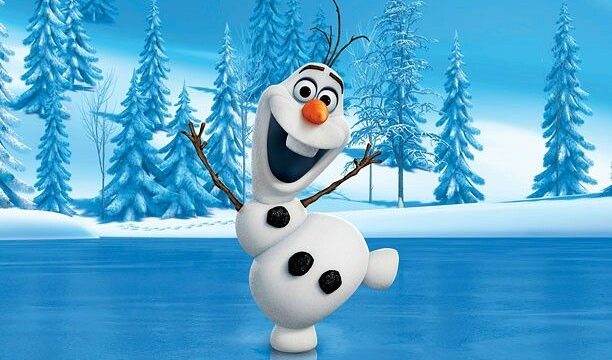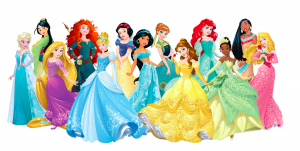
Frozen: The Savior of Modern Film?
You would think that to be a Disney movie writer, you would have to be extremely creative, right? Coming up with a storyline, characters, a whole other magical world, and many other Disney movie aspects would require someone with an inventiveness like no other, right? Wrong. In fact, I’m sure that almost any child would be able to come up with a successful Disney movie. For years now, Disney’s princess movies have contained all of the same storyline. Everyone knows how a Disney movie is set up and even worse, everyone knows how it ends – happily ever after. What a surprise.
Now recently, Disney has made a point to change the plot of their princess movies. Because of the cliche storyline that Disney adopts for each princess movie they have come out with, there has been a lot of backlash from critics over the years. This has ultimately resulted in new original Disney princess movies… or so some would think. In particular, the 2013 Disney princess movie, Frozen, has received high praise for its progressive ideas. The dominating characters, both female, obtained many feminist ideals that differed from the typical perspective of Disney princesses. The old Disney princesses relied heavily on the prince to save them and married their prince a short time after just meeting him. People claim that this is not the case in Frozen. The lack of romance in this movie endorsed the idea of independent women. In addition, the movie even includes a scene with a gay man and his family, which was an extremely progressive aspect of movie because at the time, gay marriage wasn’t legalized in the United States yet. Therefore, many people claim that Frozen is a revolutionary Disney princess movie because of its differentiation from typical Disney princess storylines.
However, if one takes a closer look, one will see that Frozen is just another classic Disney princess movie. It contains all the elements that princess movies in the past have encompassed. Although it is not always obvious in Frozen, the Disney producers continued to utilize their hypothetical equation to create this princess movie, which essentially means that Frozen is just another Disney movie on an assembly line (Adorno).
Obviously, the most common aspect for a Disney princess movie to include is romance between a prince and princess. Some people could claim that Frozen is different because there is no prince to live happily ever after with the main protagonists, Queen Elsa or Princess Anna. Ultimately, Prince Hans who showed a love interest in Anna turned out to be power hungry and evil. He did not love Anna at all (Frozen). Thus, the audience didn’t receive their classic love story ending. Nevertheless, throughout the movie there was a bond between Anna and another male character, Kristoff, that no one could ignore. It is obvious by the end of the story that the pair would eventually marry. Moreover, the writers simply could not leave out a kiss between the two. This romantic aspect satisfied the cliche storyline need for a man and woman falling in love.

This brings me to my next point of clarity for viewers who thought the scene with Oaken’s gay relationship on display distinguished Frozen as a revolutionary Disney princess movie. Never before this princess movie was there a homosexual relationship mentioned in a Disney movie, which is why even though Oaken was barely in the movie, his sexual presentation resulted in a large stirring among the audience. In this scene, Oaken, the owner of a small lodge out in the middle of the forrest, points out his family to Anna and Kristoff. His overall lack of masculinity is shown through his soft demeanor and high pitched voice, which leads the viewers to wonder if he is infact gay. It isn’t until he points out his family to Anna and Kristoff that the audience clearly sees a man surrounded by his children (Frozen). In this moment, Oaken’s homosexuality is confirmed. The reason this isn’t in fact a push forward in equalizing homosexuals is because Oaken isn’t represented as a person in society. His lodge is in the middle of the woods where hardly anyone ever visits. His isolation can be representative of how society isn’t ready to accept homosexuals into everyday life with the rest of society. This key idea reinforces the fact that Disney does not fully support homosexuals. All the classic love stories are about male and female relationships, which is not any different for Frozen.
The idea that a heterosexual relationship is the classic romance for Disney movies has also led to certain roles or behaviors automatically being assignedto a gender. In other Disney princess movies, there is an ideal image that the princess upholds. The princess most often wears long flowy dress the entire movie, which is an aspect that remained true in Frozen. Even though an ice cold blizzard raged on for the majority of the film, not once was there a scene where Princess Anna or Queen Elsa had on anything other than a dress.
 In addition, Princess Anna sings that she wants to “stuff her face” with chocolate, which she attempts to hide behind her fan because she can’t do this in front of everyone. This behavior would be seen as very unprincess-like. As you can see in the image above, not one of the princesses are even close to being considered overweight. In fact, many of the princesses would be considered extremely underweight due to their dangerously slim waists. These physical features of princesses have remained constant throughout Disney history. When children think of a princess, they imagine a young lady who is beautiful and elegant. If Frozen truly was a revolutionary Disney princess movie, then why would the producers create Anna and Elsa to encompass all the typical physical features of a princess?
In addition, Princess Anna sings that she wants to “stuff her face” with chocolate, which she attempts to hide behind her fan because she can’t do this in front of everyone. This behavior would be seen as very unprincess-like. As you can see in the image above, not one of the princesses are even close to being considered overweight. In fact, many of the princesses would be considered extremely underweight due to their dangerously slim waists. These physical features of princesses have remained constant throughout Disney history. When children think of a princess, they imagine a young lady who is beautiful and elegant. If Frozen truly was a revolutionary Disney princess movie, then why would the producers create Anna and Elsa to encompass all the typical physical features of a princess?
It is clear that there was some attempt by the Disney writers of Frozen to make Princess Anna seem more daredevil like and less girly than past Disney princesses. However, there are several moments throughout the movie where Anna makes a comment or behaves in such a way that reverts any attempts the writers make to try and differentiate her from the other princesses. For example, when Kristoff points out to Anna that her hair’s turning white from the ice Elsa shot at her heart, her immediate reaction is, “Does it look bad?” (Frozen). This highlights the fact that Anna cares more about her self-image and maintaining the perfect look of a princess than her actual life. Much like other princesses, Anna attempts to continuously look flawless. Kristoff, being the male love interest, is more concerned with saving Anna’s life.
Scene after scene, Kristoff saves Anna from a high fall, freezing to death, getting eaten by wolves, etc. This reinforces the idea that princesses need a strong male saving them or a prince. Disney movies will always include a man saving the damsel in distress. Although Kristoff isn’t technically a prince, he is tall and fair like Anna described her future prince during her song, “For the First Time in Forever” (Frozen). It would’ve been impossible for Anna to reach the North Mountain without Kristoff’s help and Anna wouldn’t have made it back out of the woods if Kristoff hadn’t carried her. Kristoff’s continuous bravery and male dominance reveals that he is very much like other Disney princes. In the scene where wolves attacked Anna and Kristoff, Kristoff asserts his dominance immediately to save the pair. He physically put his hand over Anna’s face to make her be quiet and threw her on his reindeer to save her rather than himself (Frozen). This act of selflessness and physicality highlighted that Kristoff is the prince figure in Frozen.
Disney continues to create different variations of the same story every few years. Whether it be Beauty and the Beast, or Cinderella, or Frozen, or any of the other Disney princess/prince movies, you can see the similarities I have discusses already and many more within each movie. Our art is never changing, which puts our society as risk of never changing either. The ideas of what is considered a beautiful girl are implemented into young girls’ brains when they see Princess Ariel’s long flowy hair or the beautiful gown of Belle. Boys will realize that the only way to be a man is to be brave and dominant all the time like Kristoff or Aladdin. Even our types of relationships between people will never truly change because the only relationships children see on screen are heterosexual. Disney’s prince and princess movies are inhibiting society from moving forward and accepting new ideas. By creating children movies with the same ideals and gender roles, it is always guaranteed that our society is at a standstill, never implementing new ideas or acceptance or individuality among children.
Bibliography
Adorno, Theodor & Max Horkheimer. “The Culture Industry: Enlightenment as Mass
Deception” via Dialect of Enlightenment: Philosophical Fragments. (Stanford, CA:
Stanford University Press, 2002). Pgs. 95-136.
Frozen. Jennifer Lee. Chris Buck. Walt Disney Animation Studios, 2013. Film.